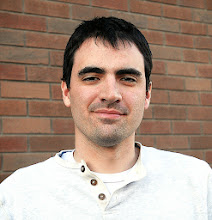A Few of my Favorite Arms
Over the last few months, through a combination of advance scheduling and luck, I've had the pleasure of seeing nearly every top-flight arm who's made a start at either Trenton, Lakewood or Wilmington. I scheduled trips to see Greenville (Matt Barnes) sometime over the winter. That worked out.
I did the same thing with Delmarva, however, and missed on seeing Dylan Bundy. Parker Bridwell wasn't a bad consolation prize, however. But because Bundy's next stop was Frederick, which plays at Wilmington a great deal, I lucked out and saw him matched against Yordano Ventura in early June.
Among the other arms I've watched this year: Jose Fernandez (Greensboro at Lakewood), Zack Wheeler (Binghamton at Reading), Trevor May (Reading vs. Portland, Reading vs. Bowie), Henry Owens (Greenville at Lakewood), and Jason Adam (Wilmington vs. Carolina, Wilmington vs. Myrtle Beach).
After thinking about it for a while the Futures Game and various All-Star Games were going on, I've decided to take a few minutes and rank the big-name pitchers I've seen, from most impressive to least.
1. Jose Fernandez
This was easy. Fernandez had the most dominating stuff I've seen all year. He worked in the mid-to-upper 90s with the fastball, which had excellent boring action. More impressive, though, was the degree to which he commanded his breaking ball. As you'll see in the video, Fernandez showed the ability to both throw the pitch for a strike or add video-game action and bury it at the hitter's feet. Lakewood simply did not have a chance.
2. Zack Wheeler
Wheeler threw about a dozen or so fastballs in the first inning against Reading this evening, none of which hit lower than 97 miles per hour on the gun of the scout sitting in front of me. In fact, he hit 100 on one heater, the first time I've seen triple-digits in person. The breaking ball, as you can see, was also incredible. He's got the potential, I think, to be a No. 2 at worst in the major leagues.
3. Dylan Bundy
That Bundy is third on this list speaks only to the caliber of pitching I've witnessed this summer and not to his future potential. As a 19-year-old in High-A, he made Wilmington's hitters look downright silly (although Wilmington's hitters have been putrid this year) with the high-end heat and a spectacular breaking pitch that he commanded at will. He gave up one unearned run during this start, earning himself his first professional loss.
4. Yordano Ventura
Ventura opposed Bundy that afternoon in Wilmington in the opener of a doubleheader. He showcased the same knockout stuff that made him a Futures Gamer, although with decidedly less command. Still, the stuff is there, and he's just 21 years old (and now in Double-A), so there's plenty of time for him to refine his command and harness his potential as a top-end starter.
5. Matt Barnes
Barnes breezed through Lakewood on this afternoon, but he did it using primarily a fastball. The few breaking balls I did see weren't commanded terribly well, which, for me, separated him from the top end of this group. He's destroyed the competition in High-A, but could run into trouble in Double-A if what I saw in Lakewood persists.
6. Henry Owens
On a pure stuff level, I loved Owens. He throws a pair of breaking balls, one tight and one loopy, both of which are nasty as hell. The problem with him, as you can see by looking at his stats, is command. He's walked 29 in 68 2/3 innings -- although he hasn't issued more than two walks in a start since May 18. If he can continue that trend, he has monster potential.
7. Jason Adam
With a mid-90s fastball, sharp breaking ball and a prototypical pitcher's body, Adam has all the makings of a big-league innings eater. It's not particularly flashy, but it's very effective and should serve him well as he moves into the upper levels.
8. Trevor May
Unbelievably disappointing. If this is Philly's top prospect, then there truly is trouble brewing. I've seen May twice this season, and the results were the same both times. Good stuff, but no idea how to command it. On more than one occasion May got ahead of the hitters with two quick strikes but couldn't -- or wouldn't -- use a breaking pitch or a change-up to put them away. Instead, he kept trying to reach back for something more on his fastball, which doesn't always work in Double-A.
 RSS
RSS


0 Comments:
Post a Comment
Subscribe to Post Comments [Atom]
<< Home